
உய்வை உலகினுக்கு ஊட்டுதமிழ் - மெய்யுணர்வில்
தன்னே ரிலாததமிழ் துங்கமுடன் மின்னிணையம்
மின்னவந்த மேன்மைத் தமிழ்.
Tamil Thirumurai Thirumanam (Marriage)
The Special features of
Tamil Thirumurai Thirumanam (Marriage)
Highlighted by Senthamizh Velvi Chadhurar
M.P.Sathiyavel Murugan B.E.,M.A.,M.Phil
- The term that goes for marriage in Tamil is Thirumanam which itself is enigmatic carrying in-depth meaning as against the Sanskrit equivalent viz. vivaha. Just as fragrance of a flower is ingrained constituently, not-known in its stage of bud, but becomes known while blossoming, so the link between the bride and the groom determined by the destiny not known until they are bespoken for marriage, becomes known while marriage and hence the term ‘Thirumanam” i.e. fragrance of the divine connection. ‘Thiru’ in Tamil means divinity and ‘Manam’ the fragrance of flower.
- Whereas the Sanskrit word ‘vivaha’ means to abduct, i.e. abducting a girl for purpose of marriage, which act, needless to say, is barbarian.
- In Thirumurai Thirumanam, the rituals are conducted invoking the presence of the Almighty (Ammai-Appar) and under His blessings through Velvi, the sacrifice and Kalasams whereas in case of Sanskrit-marriage there is no place for Lord at all but for Devas instead. Hence Tamil marriage is rather holier and theistic than Sanskrit-marriage which is totally atheistic.
- More over in Sanskrit-marriage, the mantrams chanted are neither understandable to us nor to those chanting them, for Sanskrit is a dead language, whereas Tamil mantrams are understandable and explicable even to plebian making the marriage ritual meaningful.
- There are many rituals in Sanskrit-marriage which are insipid, irrational, immoral, obscene and objectionable such as Kasi-yathrai, Namakaranam , Jathakarma, Annaprasanam, Suda-karma and mathubargam etc whereas in Tamil rituals there are no smacks of them.
- In Sanskrit-marriage there is a mantra which says that the bride has been a spouse to three others before one after another viz. somadevan, Kantharvan and Agnidevan and she is at last spouse to the bride-groom who is the fourth in line. Definite it is, gnawing one’s innards, especially to bride. Such obscene and objectionable ritual will not find place in Tamil marriage.
- In Sanskrit marriage, in accordance with ‘Ekagni Kandam’ as extracted from Rig Vedha, there is no such ritual of tying of Thali round the neck of the bride at all. The exegetes of this Sanskrit work themselves confirm that this is not a custom prevailing in Aryan race and it has been interpolated in much latter period as copied from Dravidians. They say therefore what is now passing for such mantram as ‘Mangalyam thanthu nanena’ and so on and so forth is framed later by someone unknown.
- Whereas among Tamils tying of Thali is the most significant, without which the marriage is meaningless and incomplete. In early prehistoric period lads used to cheat lasses after abusing them, the latter not able to vindicate the contact for short of evidence. To obviate such immoral trafficking, to ensure that the women are vindicated safely and to ensure thereby a social order, Tamils in those olden days devised a ruse, as per Tholkappiyam, which resulted in the ritual of tying of thali. The groom, by this ritual, is underwritten to hold out a promise to the bride in writing on a palm-leaf to hold fast the marital relationship inseparably to the end of his life, the palm-leaf being scrolled and shoved into a small capsule of metal which, strung to a cord is called ‘thali’. Hence, it is the deed of promise held out by the groom that is hanging around the neck of the bride.
- The palm-leaf in Tamil is called ‘Thalam’; that which is made of Thalam is therefore called Thali. On similar line, that which ensures safety of any kind resembling thali is named after it in Sumerian-akkadian languages which taken later via Latin into English as ‘Talisman’.
- This concept of thali, not understood by Aryans while absorbing into their rituals, they have two thalis tied, one called vettathu thali and another pukkathu thali. The significance of two thalis will make things absurd and obscene.
- The core of the Sanskrit-marriage ceremony is ‘sapthapathy’. The bride groom, by this ritual, make the bride walk seven steps. For each steps separate mantrams are enchanted, one of which says as follows:
“We are just friends. I (groom) will not breach our friendship; nor must you (bride) breach and desert me.”
This mantram, as such, obviously envisages that the bride may at sometime in future desert the groom and breach him and indulge in promiscuity. Such suspicion even as they stand in the stage of marriage is totally insulting to the integrity of the bride. This would be detrimental to the smooth run of the marital relationship. None-the-less, the marital relationship is something more than friendship. Couples are obviously different from friends. Hence this Sanskrit-ritual is utterly irrational.
Whereas a Tamil women would keep chastity to her bosom as more than her life-juice as per the old grammar work known as Tholkappiyam.
- The Sanskrit-marriage ends with what is called mathubargam which means banquet in hospitality. The ‘Ekagni kandam’ stipulates that the guests shall be honored with meat of calves specially killed for the occasion. There are mantrams to the effect. Finding it obsolete, later, instead of heads of calves, coconuts are rolled and toyed between the couple, however the chanting of mantrams for cutting calves remaining the same. This ritual of butchery is not even thought-of in Tamil Thirumurai Thirumanam.
- There are hump teen more other features that scintillate with flying colors with Tamil Thirumurai Thirumanam. For details, those interested are requested to go through the following books.
- Vanthamizhil Vazhviyal Satangukal
- By Senthamizh velvi chathurar M.P.Sathiyavel Murugan
- Hindu Matham Yengay Pogirathu
- By Agnihothram Ramanuja Thathachariar
தமிழில் அறிய....
திருமுறை திருமணம்
நடிகர் சிவகுமார் அவர்களின் மகன் சூர்யா-ஜோதிகாவின் திருமண புகைப்படங்கள்
தமிழ் திருமுறைப்படி திருமணத்தை நடத்தி வைத்தவர் "செந்தமிழ் வேள்விச் சதுரர் மு. பெ. சத்தியவேல் முருகனார்" அவர்கள் .
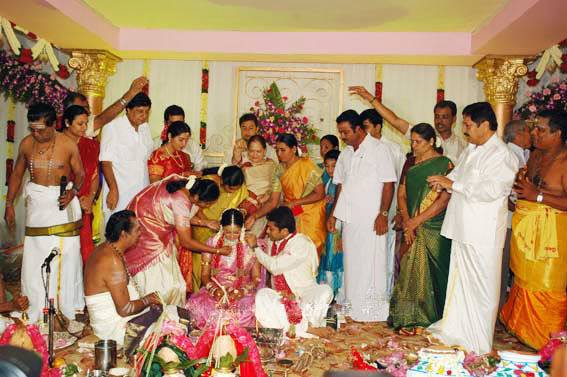

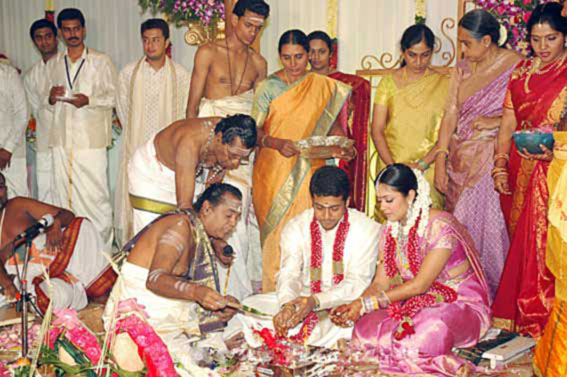
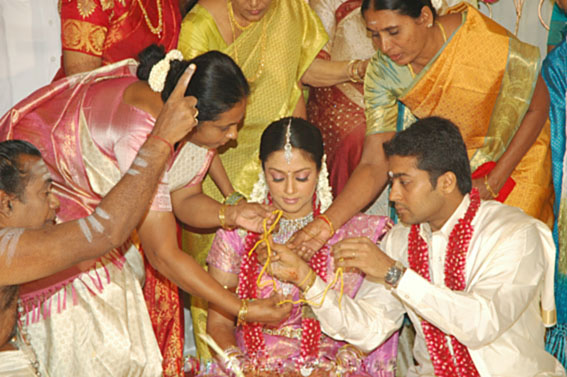
செந்தமிழ் ஆதி தெளிந்து வழிபடு
நந்தி இதனை நவமுரைத் தானே
- திருமூலர்
திருமணம் முதலான இல்லச் சடங்குகளுக்கும் பயிற்சிக்கும்
தொடர்புகொள்க
தமிழ் வழிபாட்டு பயிற்சி மையம்
தொடர்பாளர்::- ச.மு. தியாகராசன், கைபேசி ::- 93809 19082, 94440 42770
நிகழ்வுகள்

![]() 18-ஆம் ஆண்டு திருமந்திர முற்றோதல் விழா
18-ஆம் ஆண்டு திருமந்திர முற்றோதல் விழா
![]() மூன்று நாள் விழா! 2-1-2009, வெள்ளி முதல் 4-1-2009, ஞாயிறு வரை
மூன்று நாள் விழா! 2-1-2009, வெள்ளி முதல் 4-1-2009, ஞாயிறு வரை
![]() சைவசித்தாந்தச் செந்நெறி விளக்கும் ஆறாம் தந்திரம் முற்றோதல்.
சைவசித்தாந்தச் செந்நெறி விளக்கும் ஆறாம் தந்திரம் முற்றோதல்.

![]() 18th year - Thirumanthiram Recital (3rd Round)
18th year - Thirumanthiram Recital (3rd Round)
![]() A Three Day Program :: 2nd - 4th Jan 2009
A Three Day Program :: 2nd - 4th Jan 2009
![]() Full Recitation of 6th Thanthiram - in Nine sittings.
Full Recitation of 6th Thanthiram - in Nine sittings.

தமிழறிஞர்கள் யாவரும் கொண்ட முடிவை ஏற்று தமிழக முதலமைச்சர் அறிவித்த வேகத்தில் இடையீடு விழாமல் அரசாணைக்கு ஏற்பாடு செய்தமைக்கு எட்டு கோடி தமிழர்களும் அவரை விட்டுக் கொடுக்காமல் திசை நோக்கி வணங்குவதே கடன்!
படைப்புகள்
 குற்றக்கழுவாய்
(பிரதோஷ) வழிபாடு:
குற்றக்கழுவாய்
(பிரதோஷ) வழிபாடு:
இறைவனை மறவாது வழிபட வேண்டும் என்பது பொது நியதி. எந்த வழிபாடானாலும்
அது அறிவோடு ஆற்றப்பட வேண்டும். சிறப்புமிக்க பிரதோஷ
வழிபாட்டை ஏன் செய்ய வேண்டும் ? எப்படி செய்ய வேண்டும் ? அப்படிச் செய்வதன்
பொருள் என்ன? என்பதையெல்லாம் இந்நூலில் "உள்ளுறை" என்ற பகுதியிலும்
"சிறப்பு" என்ற தலைப்பில் அதன் வழிபாட்டு முறைகளும் கூறப்பட்டுயுள்ளது.
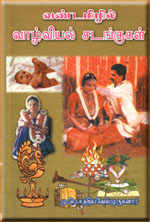 வண்டமிழில்
வாழ்வியல் சடங்குகள் :
வண்டமிழில்
வாழ்வியல் சடங்குகள் :
நமது நாட்டில் குழந்தையைத் "தொட்டில் இடுதல்" ஆகிய தொடக்கம் முதல் "திருவடிப்பேறு" ஆகிய அடக்கம் வரை எத்தனையோ சடங்குகள் உள்ளன.
சடங்கு என்றால் வாழ்வின் முக்கியமான நிகழ்வுகளை ஓர் ஓழுங்குமுறைக்குள் கொண்டு வர தமிழ்ச் சான்றோர்களால் யாக்கப்பட்ட முறையாகும். அவை மதிப்பு பெறுவது அவரவர் தாய் மொழியில் அவை ஆற்றப்படும்போது என்பது தெளிவு. ஆகவே தமிழர்கள் தமிழ் மொழிலேயே வாழ்வியல் சடங்குகளை ஆற்றுவதே இன்றைய தேவை. அந்தத் தேவையை நிறைவு செய்ய எழுந்ததே இந்நூல்.
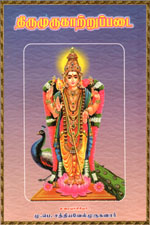 திருமுருகாற்றுப்
படை:
திருமுருகாற்றுப்
படை:
திருமுருகாற்றுப்படை ஒரு தீவிர பத்தனை முருகப்பெருமானிடம்
ஆற்றுப்படுத்துவது. திருமுருகாற்றுப் படைக்குச் சான்றோர் சிலர் உரை கண்டிருக்கின்றனர்.
ஆனால் இந்நூலாசிரியர் தமிழ்ச்சதுரர் மு.பெ. சத்தியவேல் முருகனார் நன்னூலுக்குச்
சிவஞான முனிவர் விருத்தியுரை கண்டது போல் ஒரு விருத்தியுரை கண்டிருக்கிறார்.

